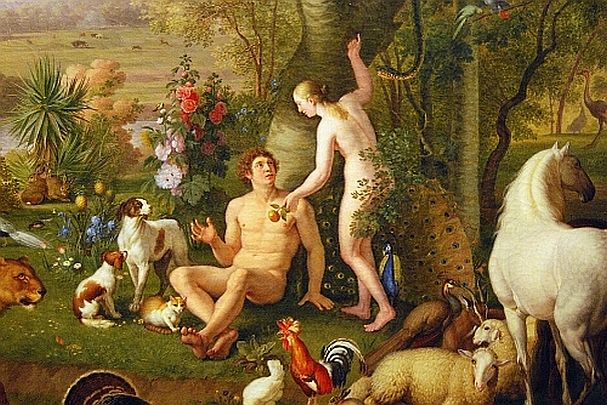This article first appeared in the Ask Hank column of the Christian Research Journal, volume 41, number 5 (2018). For further information or to subscribe to the Christian Research Journal please click here.
The Lord God made all kinds of trees grow out of the ground — trees that were pleasing to the eye and good for food. In the middle of the garden were the tree of life and the tree of the knowledge of good and evil. (Gen. 2:9)1
The Tree of Life. The wisest man who ever lived2 likened wisdom, “the fruit of the righteous,” and “longing fulfilled” to the proverbial “Tree of Life” (Prov. 3:18; 11:30; 13:12). Such exemplars of beauty and blessing, however, find ultimate root in two gardens, with Golgotha in between.
In the beginning, the Tree of Life stood as the centerpiece of the garden of Eden. When Adam and Eve ate the forbidden fruit, the tree remained a memorial to Paradise lost: God “placed on the east side of the garden of Eden cherubim and a flaming sword flashing back and forth to guard the way to the tree of life” (Gen. 3:24).
Furthermore, standing on the other side of history, the Tree of Life is rooted in an eternal garden, this time, a memorial to Paradise regained. The angel of the apocalypse showed John, the apostle of the apocalypse, “the river of the water of life, as clear as crystal, flowing from the throne of God and of the Lamb down the middle of the great street of the city. On each side of the river stood the tree of life, bearing twelve crops of fruit, yielding its fruit every month. And the leaves of the tree are for the healing of the nations. No longer will there be any curse” (Rev. 22:1–3, emphasis added). “To him who overcomes,” said Jesus, “I will give the right to eat from the tree of life, which is in the paradise of God” (2:7, emphasis added).
Finally, the Tree of Life stands on Golgotha’s hill as the fulcrum of history. On it, Jesus stretches one hand toward the Garden of Eden, the other toward the eternal Garden. The immortality the first Adam could no longer reach, the Second Adam touched in his place. Thus, Jesus vanquished the power of evil, giving ultimate victory to the knowledge of good.
The Tree of the Knowledge of Good and Evil. The Tree of the Knowledge of Good and Evil is a prime example of physical reality highlighting spiritual truth (see John 3:12).
To begin with, God placed the tree in the middle of Paradise as a test; Satan perverted it as a temptation. In eating from the tree about which God said, “When you eat of it you will surely die,” Adam challenged God as arbiter of good and evil (Gen. 2:17).
Furthermore, the Tree of the Knowledge of Good and Evil is the symbol of choice — between obedience and disobedience, between majestic revelation (God’s truth) and moral relativism (my truth).
Finally, though Adam sinned, God responded with mercy. He drove Adam from the garden so that he no longer had access to the Tree of Life. To do otherwise would have doomed humanity to an endless physical existence in a fallen spiritual condition — which is precisely what hell is. Hell, however, can be averted. And Paradise regained.
As Adam’s descendants, we can yet embrace the Tree of Life where the personification of all that is good paid the ultimate price to take all that is evil upon Himself
— Hank Hanegraaff
Notes:
- Scripture quotations are from NIV.
- I should say that Solomon was the wisest of mere mortal men (see 1 Kings 3:7–12; 4:29–31; 10:27), second to Theanthropos — the God/Man — the Lord Jesus Christ (Matt. 12:42; John 1:1-5, 14, 18; 1 Cor. 1:24–25, 30).
- Article adapted from Hank Hanegraaff, The Creation Answer Book (Nashville: Thomas Nelson, 2012), 57–60.









